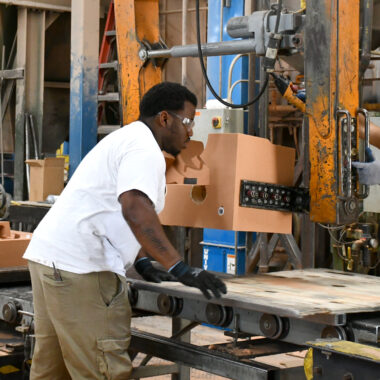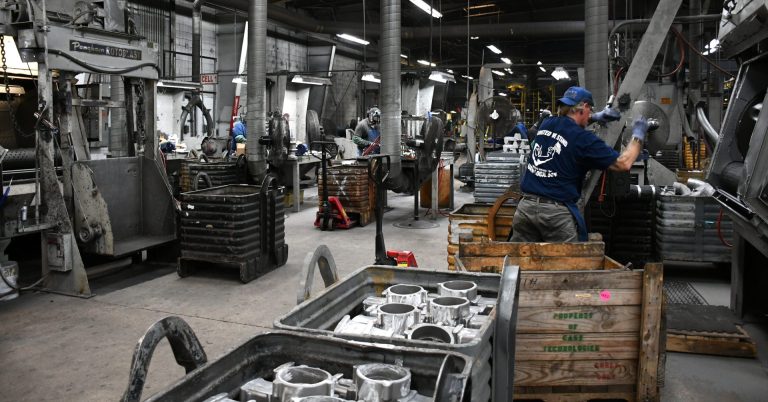Crafting Excellence: How to Accomplish High-Quality Aluminum Castings Whenever
In the world of aluminum spreading, the search of perfection is a continual trip that needs a precise method and a keen understanding of the intricacies entailed. Achieving consistent high-grade aluminum castings requires a comprehensive grasp of the procedures, from choosing the suitable alloy to implementing specific mold designs and diligently managing casting parameters. The true proficiency lies in the capacity to carry out these elements flawlessly to produce remarkable castings every time. As we check out the details of crafting excellence in aluminum castings, revealing the key approaches and methods that bring about remarkable outcomes comes to be extremely important for those pursuing quality in this specialized field.
Recognizing Light Weight Aluminum Casting Procedures
Light weight aluminum casting procedures, important in the production sector, entail the detailed makeover of molten aluminum into solid forms with a collection of carefully regulated actions. Recognizing these processes is vital to attaining high-grade aluminum spreadings regularly - about aluminum casting. The primary methods utilized in aluminum casting are die spreading, sand spreading, and financial investment spreading

Each of these processes has its advantages and is chosen based on aspects like intricacy, volume, and preferred coating of the aluminum casting. about aluminum casting. Comprehending the details of these approaches is important for manufacturers intending to produce high-grade aluminum castings regularly
Picking the Right Light Weight Aluminum Alloy
Picking the proper aluminum alloy is an important decision in the manufacturing of high-grade aluminum spreadings. When choosing a light weight aluminum alloy for casting, it is crucial to take into consideration the specific demands of the application to ensure ideal performance.
One of the most generally made use of light weight aluminum alloys for spreading is A356 - about aluminum casting. For applications calling for high toughness, 7075 aluminum alloy is a preferred choice due to its remarkable strength-to-weight ratio.
In addition to mechanical buildings, factors to consider such as expense, availability, and post-casting processes need to additionally affect the choice of the ideal aluminum alloy. By very carefully examining read the article these aspects, makers can make sure the production of high-grade light weight aluminum spreadings that meet the desired requirements.
Implementing Proper Mold And Mildew Layout
Establishing an efficient mold layout is essential for guaranteeing the effective manufacturing of high-quality light weight aluminum castings. Proper mold and mildew layout plays a substantial function in achieving the wanted attributes of the end product. To implement an effective mold layout, variables such as product flow, cooling down rates, and component geometry have to be meticulously thought about.
One key element of mold layout is making sure proper dental filling and solidification of the aluminum within the mold and mildew cavity. This involves making runner and gating systems that facilitate smooth steel circulation and stop defects such as air entrapment or insufficient dental filling. Additionally, including cooling networks into the mold and mildew design aids manage solidification prices and decrease the danger of porosity or shrinkage problems.

Controlling Spreading Parameters

Ensuring Post-Casting Quality Checks
To preserve the high top quality of light weight aluminum spreadings, comprehensive post-casting high quality checks are essential. After the spreading procedure is finished, it is critical to ensure that the final items fulfill the wanted standards and specs.
Dimensional precision is one more vital facet that needs to be validated throughout post-casting top quality checks. Dimensions of essential dimensions and resistances need to be taken to confirm that the castings adapt to look at this web-site the needed specs. Additionally, mechanical residential or commercial properties such as firmness, tensile strength, and impact resistance may need straight from the source to be examined with material testing to ensure that the spreadings possess the necessary toughness and durability for their intended application.
Verdict
In verdict, achieving high-quality light weight aluminum spreadings needs a complete understanding of the spreading procedures, choosing the appropriate alloy, making mold and mildews efficiently, controlling spreading criteria thoroughly, and conducting post-casting top quality checks diligently. By following these steps, suppliers can continually create aluminum spreadings that satisfy the highest criteria of quality and performance.
Achieving constant premium aluminum castings requires a thorough understanding of the processes, from picking the suitable alloy to implementing accurate mold and mildew designs and diligently managing spreading parameters. The main approaches utilized in aluminum casting are die casting, sand spreading, and investment spreading.
Financial investment casting, additionally understood as accuracy casting, includes producing wax patterns that are coated in ceramic to create molds.Choosing the ideal aluminum alloy is an essential decision in the manufacturing of high-quality aluminum spreadings.Guaranteeing precise control over casting criteria is important for preserving uniformity and top quality in light weight aluminum casting production.